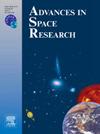一种利用基于熔合变压器的深度特征和深度神经网络的森林火灾探测的创新混合方法
IF 2.8
3区 地球科学
Q2 ASTRONOMY & ASTROPHYSICS
引用次数: 0
摘要
森林火灾是最严重和最具破坏性的灾难之一,它导致森林砍伐、野生动物灭绝、全球变暖和气候变化。在火灾达到灾难性程度之前,早期的火灾探测至关重要。早期干预需要基于人工智能的系统来准确、快速地探测森林火灾。如果没有这样的系统,灭火工作的拖延会造成巨大的破坏和损失。有效的监测系统可以减少火灾损失,从而防止森林损失。本研究旨在开发一个成功的人工智能模型,从森林景观图像中检测火灾。在这种背景下,这项工作是新的,因为它通过使用深度神经网络分析基于融合变压器架构的特征图,为森林火灾探测提供了鲁棒性和科学建模的新见解。实验模型采用准确度、灵敏度、精密度和接收机工作特性曲线下面积测量进行验证。验证结果表明,所提出的混合模型性能最好,所有模型均能得到合理的结果。综上所述,两个数据集的准确率分别为99.58%和96.79%,有力地支持了混合模型的5倍交叉验证的火灾探测成果。此外,高灵敏度和高精度的测量意味着模型很少有假阴性和假阳性。考虑到所得到的精度,该混合模型可用于综合火灾探测建模。据作者所知,这项研究是第一次使用变压器架构和深度神经网络进行森林火灾探测,因此对相关文献很重要。在此背景下,本研究提出了一种新的方法来区分森林火灾的景观图像,并通过变压器结构在特征提取中的作用进一步发展火灾探测策略。据认为,通过在配备实时系统的无人驾驶飞行器上执行所提出的模型,火灾探测将为现场专业人员提供决策支持,以减少损害和管理森林火灾。本文章由计算机程序翻译,如有差异,请以英文原文为准。
An innovative hybrid method utilizing fused transformer-based deep features and deep neural networks for detecting forest fires
Forest fires, one of the most pernicious and devastating disasters, cause deforestation, wildlife extinction, global warming, and climate change. Early fire detection is critical before it reaches catastrophic dimensions. Artificial intelligence-based systems that detect forest fires accurately and quickly are needed for early intervention. Delayed extinguishing efforts without such systems cause tremendous damage and losses. An effective monitoring system allows for the reduction of fire damage and hence prevents forest loss. This study aims to develop a successful artificial intelligence model to detect fire from forest landscape images. In this context, this work is new as it provides new insights into robust and scientific modeling for forest fire detection by analyzing feature maps based on fused transformer architectures using Deep Neural Networks. The experimental models were validated using accuracy, sensitivity, precision, and area under the receiver operating characteristic curve measures. The validation findings reveal that the proposed hybrid model performs the best while all models yield reasonable results. To summarize, satisfactory accuracy values of 99.58% and 96.79% for both datasets, respectively, strongly support the proposed hybrid model’s fire detection achievement with the 5-fold cross-validation. Furthermore, the high sensitivity and high precision measures imply that the model has few false negatives and false positives. Considering the obtained accuracies, the proposed hybrid model could be used for comprehensive fire detection modeling. To the author’s best knowledge, this study is the first to use transformer architectures and Deep Neural Networks for forest fire detection and is therefore important for the relevant literature. In this context, this study presents a new approach to distinguishing landscape images of forest fires and further developing fire detection strategies by the role of transformer architectures in feature extraction. It is thought that by executing the proposed model in an unmanned aerial vehicle equipped with a real-time system, fire detection will provide decision support to field professionals in reducing damage and managing forest fires.
求助全文
通过发布文献求助,成功后即可免费获取论文全文。
去求助
来源期刊

Advances in Space Research
地学天文-地球科学综合
CiteScore
5.20
自引率
11.50%
发文量
800
审稿时长
5.8 months
期刊介绍:
The COSPAR publication Advances in Space Research (ASR) is an open journal covering all areas of space research including: space studies of the Earth''s surface, meteorology, climate, the Earth-Moon system, planets and small bodies of the solar system, upper atmospheres, ionospheres and magnetospheres of the Earth and planets including reference atmospheres, space plasmas in the solar system, astrophysics from space, materials sciences in space, fundamental physics in space, space debris, space weather, Earth observations of space phenomena, etc.
NB: Please note that manuscripts related to life sciences as related to space are no more accepted for submission to Advances in Space Research. Such manuscripts should now be submitted to the new COSPAR Journal Life Sciences in Space Research (LSSR).
All submissions are reviewed by two scientists in the field. COSPAR is an interdisciplinary scientific organization concerned with the progress of space research on an international scale. Operating under the rules of ICSU, COSPAR ignores political considerations and considers all questions solely from the scientific viewpoint.
 求助内容:
求助内容: 应助结果提醒方式:
应助结果提醒方式:


